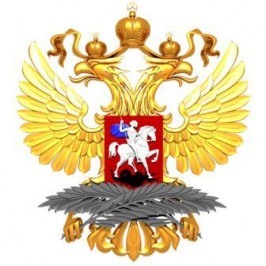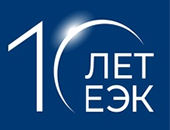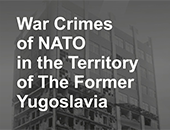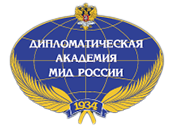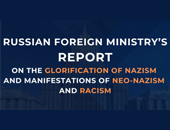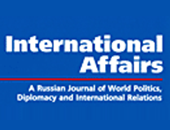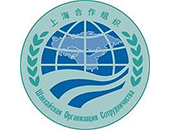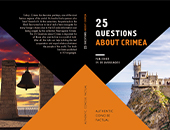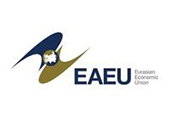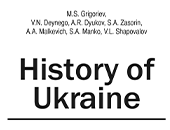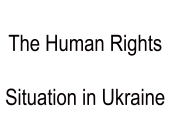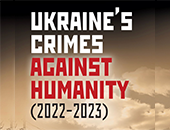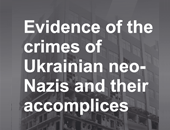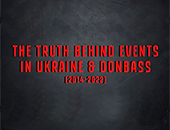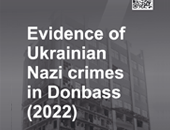The Syrian Arab Republic had one of the most advanced chemical industries in the Middle East in terms of both civilian and military production. Chemical weapons capability had strategic importance for Damascus in the context of long-standing tensions with Israel.
Since 2011, the US has been making threats against Syria at various levels and without any serious reason, claiming that some kind of a red line would be crossed if Damascus used chemical weapons, which would prompt military action against Syria.
There were no confirmed cases of the Syrian government using chemical weapons during this period. At the same time, chemical weapon attacks committed by various anti-government forces, including terrorist groups supported by the US and its allies, were happening with increased frequency.
On March 19, 2013, makeshift projectiles containing sarin nerve agent were used by rebel fighters in Khan al-Assal near Aleppo, killing 28 people, including 17 Syrian servicemen, while more than 130 people suffered wounds of varying severity.
Damascus immediately took the required steps to launch the Secretary-General’s Mechanism for Investigation of Alleged Use of Chemical and Biological Weapons. Due to the position adopted by the US, France and the United Kingdom, the UN Security Council delayed the decision for several months. UN experts led by Ake Sellstrom, a Swedish professor, finally arrived in Syria on August 14, 2013.
On August 21, 2013, when Ake Sellstrom’s team was in Eastern Ghouta, a Damascus suburb, opposition fighters carried out another large provocation involving sarin. The exact number of those killed or hurt in the attack has not been determined to this day (about 1,500 people according to the US).
Seeking to prevent a looming foreign intervention in the intra-Syrian conflict, the President of Russia Vladimir Putin suggested that Syria accede to the Chemical Weapons Convention (CWC) as soon as possible which would entail an obligation for the country to report to the international community its chemical stockpiles with a view to eliminating them.
Russia and the United States reached a framework agreement to this effect during talks in Geneva on September 14, 2013, followed by a decision of the Executive Council of the Organisation for the Prohibition of Chemical Weapons (OPCW) and UN Security Council Resolution 2118. A plan of unprecedented scale and nature was devised to remove the main components of chemical weapons from Syrian territory and destroy them.
The Russian Federation made a substantial contribution to preparing the operation to remove the precursors of chemical weapons from Syria. On very short notice, Russia sent more than 130 armoured Ural, Kamaz trucks and BTR-80 personnel carriers along with other equipment (kitchen trucks, tents, etc.) that were needed for ensuring that chemicals were safely removed from Syria. In addition, Russia contributed $2 million to a UN special trust fund for the destruction of Syrian chemical weapons. At the same time, the West declined, under far-fetched pretexts, to participate in the effort of the United Nations Office for Project Services (UNOPS) to supply Syria with the equipment it needed. Instead, the West narrowed its contribution to buying used and worn-out trailers in Lebanon, and at least half of them never made it to Syria due to their poor technical condition.
On December 27, 2013, Moscow hosted consultations between China, Syria, Denmark, Norway, the US, the OPCW and the OPCW-UN Joint Mission in Syria, which was established on October 16, 2013 and was chaired by Special Coordinator and Representative of Secretary-General Sigrid Kaag. The OPCW-UN Joint Mission was closed on October 1, 2014.
The parties coordinated a plan to ensure the safety of the marine route for chemical weapons removal, under which a centre was established on the Russian cruiser Pyotr Veliky to coordinate the interaction of all the vessels involved throughout the operation. The Russian cruiser Pyotr Veliky and Chinese frigate Yancheng protected the convoy of vessels carrying chemical weapons in Syria’s territorial waters, beyond which the Dutch frigate Ark Futura and Norwegian frigate Taiko took over.
The international operation to remove the components and precursors of chemical weapons from Syria was completed on June 23, 2014. In all, 1,200 tonnes of toxic agents have been removed from Syria and 100 tonnes of isopropanol, a less toxic agent, were destroyed on the ground.
The destruction of Syrian chemical weapons began on July 7, 2014 aboard the specialised US Maritime Vessel Cape Ray, and was completed on August 18, 2014. The effluents, or reaction mass, resulting from hydrolysis were later utilised at industrial facilities in Finland and Germany, and their precursors, including methylphosphonyl difluoride (DF) that is used for the production of sarin, were destroyed in Britain and the US. It is notable that while destroying part of these precursors on Cape Ray, the Americans had full access to the formula and the production technology of Syria’s sarin. Moreover, when Syria joined the OPCW in 2013, the Syrian government submitted detailed information on its sarin production methods to the OPCW. Therefore, the traces of DF in the sarin that was used during the April 4, 2017 attack in Khan Sheikhoun cannot indicate without a doubt that the attack was staged by the Syrian government army.
Syria carried out an unprecedented operation, the first ever in the OPCW’s history, removing chemical weapons from its territory with assistance from Russia and other countries in a record-short period of time – six months – and in the extremely complicated conditions of fighting international terrorism. The destruction of these weapons was organised outside Syria and was completed by the end of 2015, with nearly a year-long delay due to problems at Veolia, the US firm contracted by the OPCW to dispose of part of the Syrian chemical weapons stockpiles.
In other words, Syrian chemical weapons stockpiles were destroyed completely exclusively thanks to the goodwill and commitment of the Syrian government, with active contribution from all the OPCW member states and under strict control by the OPCW. Director-General of the OPCW Ahmet Uzumcu officially announced the completion of the destruction of declared Syrian chemical weapons on January 4, 2016. At this moment, 27 Syrian chemical weapons production facilities (CWPFs) had been destroyed. The destruction of 25 of them has been verified by the OPCW.
At the same time, a Declaration Assessment Team (DAT) was established in April 2014 at the insistence of the Western countries to verify if Syria’s declaration of its chemical weapons and facilities required by Article III of the CWC was accurate and complete. In 2016, Damascus subjected the verification of several laboratories at research centres in Barza and Jamraya to the OPCW in keeping with Articles III and VI of the CWC.
The OPCW’s Technical Secretariat still believes that the Syrian authorities have not declared all of their chemical weapons facilities, which the Western countries are using to accuse Damascus of CWC violations.
In fact, changes in the initial declaration to the OPCW are a routine practice which many CWC member states have made use of.
The unprecedented decision that was taken on Syria at the 83rd session of the OPCW Executive Council exceeds the CWC’s legal framework and stipulates, in part, unencumbered access to Syrian military facilities. The two inspections conducted under this decision at the research centres in Barza and Jamraya have not revealed any evidence of undeclared activity.
In April 2014, a Fact-Finding Mission (FFM) was also established to investigate the possible use of toxic chemicals in Syria.
A trend has emerged recently to narrow down the FFM’s mandate to establishing whether chemical weapons were used in various incidents, while the mission’s leadership does not view identifying how the weapons were used or collecting physical evidence that could help identify the perpetrators as part of its mandate.
This has led to the emergence of a misguided practice whereby alleged chemical weapons incidents that violate OPCW standards are investigated remotely without any presence on the ground. No samples are collected, while the choice of “witnesses” and “victims” who provide accounts of the events is questionable. Investigations consist of “analysing” unverified reports from the Syrian opposition, as well as NGOs affiliated with the militants like the White Helmets, who receive funding from Great Britain and the US.
Created in 2015 under UN Security Council Resolution 2235, the OPCW-UN Joint Investigative Mechanism (JIM) has operated in a similar fashion. It was designed to identify the perpetrators of the crimes in question, including using data provided by the FFM, and submit its conclusions to the UN Security Council.
The JIM released seven reports. Its latest report, dated October 26, 2017, lays the responsibility for the alleged April 4, 2017 sarin attack in Khan Shaykhun on the Syrian Air Force, while ISIS is blamed for the September 16, 2016 mustard gas attack in Maarat Umm Hawsh. At the same time, JIM investigators did not bother to visit the sites of the alleged chemical attacks, citing security concerns, while the so-called physical evidence and witness accounts were provided to the FFM by armed opposition groups. In this situation, the investigation could hardly be viewed as unbiased or impartial.
According to the Director of the United Nations Department of Safety and Security (UNDSS), an agreement was reached with field commanders to provide OPCW inspectors safe access to Khan Shaykhun. However, neither the FFM representatives, nor JIM investigators went to the site of the alleged incident.
The Western countries refused to adjust the JIM mandate in order to expand its geography and emphasise its counter-terrorist aspect. The draft UN Security Council resolution sponsored by Russia, together with China and Bolivia, to ensure that the JIM mandate is consistent with OPCW standards, was also blocked. The JIM lapsed in November 2017.
Against the backdrop of the JIM reports and the persisting Western attempts to question the initial filings by Damascus under the CWC, the US and its allies are conducting an aggressive campaign at the UNSC and the OPCW to impose punitive decisions on Damascus.
On January 23, 2018, Russia submitted a draft resolution at the UN Security Council on the creation on a new investigative body that would be legitimate and, even more importantly, totally impartial and highly professional. However, the Western members of the UN Security Council vehemently oppose Russia’s initiative. In its counter projects, the US takes into consideration only a small portion of Russia’s ideas, reducing the initiative to re-creating the JIM with all its shortcomings.
The threat of chemical terrorism remains real not only Syria, but also in Iraq and the Middle East in general. Militants are using toxic agents with increased frequency. Moreover, they already possess the technical and manufacturing capabilities to produce warfare chemicals in their own right, and established far-reaching supply channels to access precursors. There is no hiding that the militants count within their ranks former officers from Middle Eastern countries who used to work on chemical weapons programmes in Iraq (under Saddam Hussein), Libya (under Muammar Gaddafi) and Syria (before its accession to the CWC). Even representatives of the US-led coalition have reported many times on the discovery of underground ISIS workshops for making chemical weapons.
Over the past three years, Russia has repeatedly proposed adopting a UN Security Council resolution or at least a statement by the UN Security Council President condemning acts of chemical terrorism in Syria and Iraq. Unfortunately, all Russia’s proposals to this effect invariably encountered stiff opposition from a number of Western countries, who preferred to insist on their groundless accusations against the alleged use of chemical weapons by Bashar al-Assad’s legitimate government. In doing so, the Western countries give a sense of impunity to the militants encouraging them to use chemical weapons.





